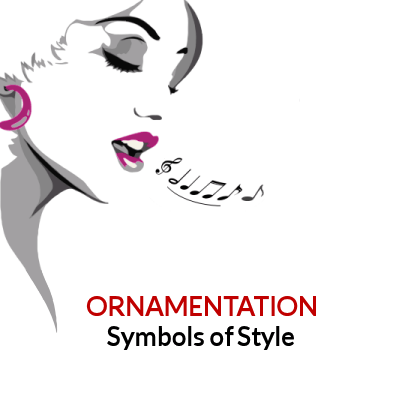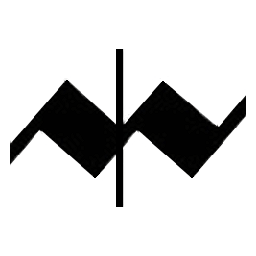
Ornamentation is the musical symbols instructing the musicians to embellish or add to the actual written notes and instruction. Composers use ornamentation or style marks as a way of expressing themselves through the music by adding emotion. Through embellishment, the performer can add more style to the music making it more appealing to the listener.
As mentioned, ornamentation can help the composer convey his intent to the musicians by offering the freedom of style and emotion. Through the embellishment of tones and chords, the audience gets a more accurate sense of how the composer really feels and the true message of the song. Review the symbols of ornamentation below:

Accent marks - tells the musician to emphasize a note over the other notes around it; play a note with emphasis over other notes

Mordent, upper - tells the musician to play the note in a rapid alternation with the note above it in the scale

Accented pressure - tells the musician to play the note(s) with a strong emphasis over other notes

Natural harmonics for strings - tells the musician to play the string open while lightly touching it at the octave fret

Accented staccato - tells the musician to play the note(s) with strong emphasis and separation

Portato, louré - indicates an articulation of legato that is not as detached as staccato

Acciaccatura - (Italian, "to crush") tells the musician to play a quick light leading tone into the next tone using none of its time value


Appogiatura or grace note - (Italian, "to lean upon") indicates to play a leading tone into the next note using half of it's time value.

Rhythm notation - tells the musician to improvise a rhythm based on the chord written above the staff; normally written for guitar

Arpeggiate chord down - tells the musician to play a chord's lower arpeggio in a sequence of notes

Slash notation - a series of slash marks as notes normally written for guitar

Arpeggiate chord up - tells the musician to play a chord's upper arpeggio in a sequence of notes

Slide - tells the musician to play the note with a leading slide up to the note or a following slide down from the note

Artificial harmonics for strings - tells the musician to press and play a note then lightly touch the string at the octave fret

Staccatissimo - tells the musician to play the note(s) detached in a separated and equal manner; cut the note(s) slightly short

Bend string down - tells the musician to bend the string downward to increase its pitch; the number indicates the fret

Staccato - tells the musician to play the note(s) detached in a separated and equal manner; cut the note(s) slightly short

Bend string down - tells the musician to bend the string downward to increase its pitch; the number indicates the fret

Tremolo - tells the musician to rapidly repeat the note or rapidly alternate the note with it's adjacent note; the number of bars indicates the duration of the tremolo.

Bend string up - tells the musician to bend the string upward to increase its pitch; tablature staff; number indicates fret

Trill - tells the musician to rapidly alternate the note with its next higher note within the same time; also called shake or tremblement

Bend string up - tells the musician to bend the string upward to increase its pitch; tablature staff; number indicates fret

Triplet 1 - a group of three notes played with an identical significant accent

Caesura - tells the musician to make a brief pause between musical sections, phrases, or movements

Triplet 2 - a group of three notes played in the time value of two

Glissando, portimento - tells the musician to play a series of leading notes into the next note or phrase

Turn 1, gruppetto - placed above a note, tells the musician to play a short figure (musical phrase) consisting of the note above, the note itself, the note below, and back to the main note.

Glissando - tells the musician to play a series of leading notes into the next note or phrase

Turn 2, - when placed to the right of a note, tells the musician to play a short figure consisting of the note below, the note itself, the note above, and back to the main note

Legato, Tie, Slur - tells the musician to play the notes blending together without separation

Turn 3, Inverted - a notation, when written with a short vertical line through, tells the musician to play a short figure consisting of, in reverse order: note below, note itself, note above, main note

Mordent, Inverted or lower - tells the musician to play the note in a rapid alternation with the note above it in the scale


